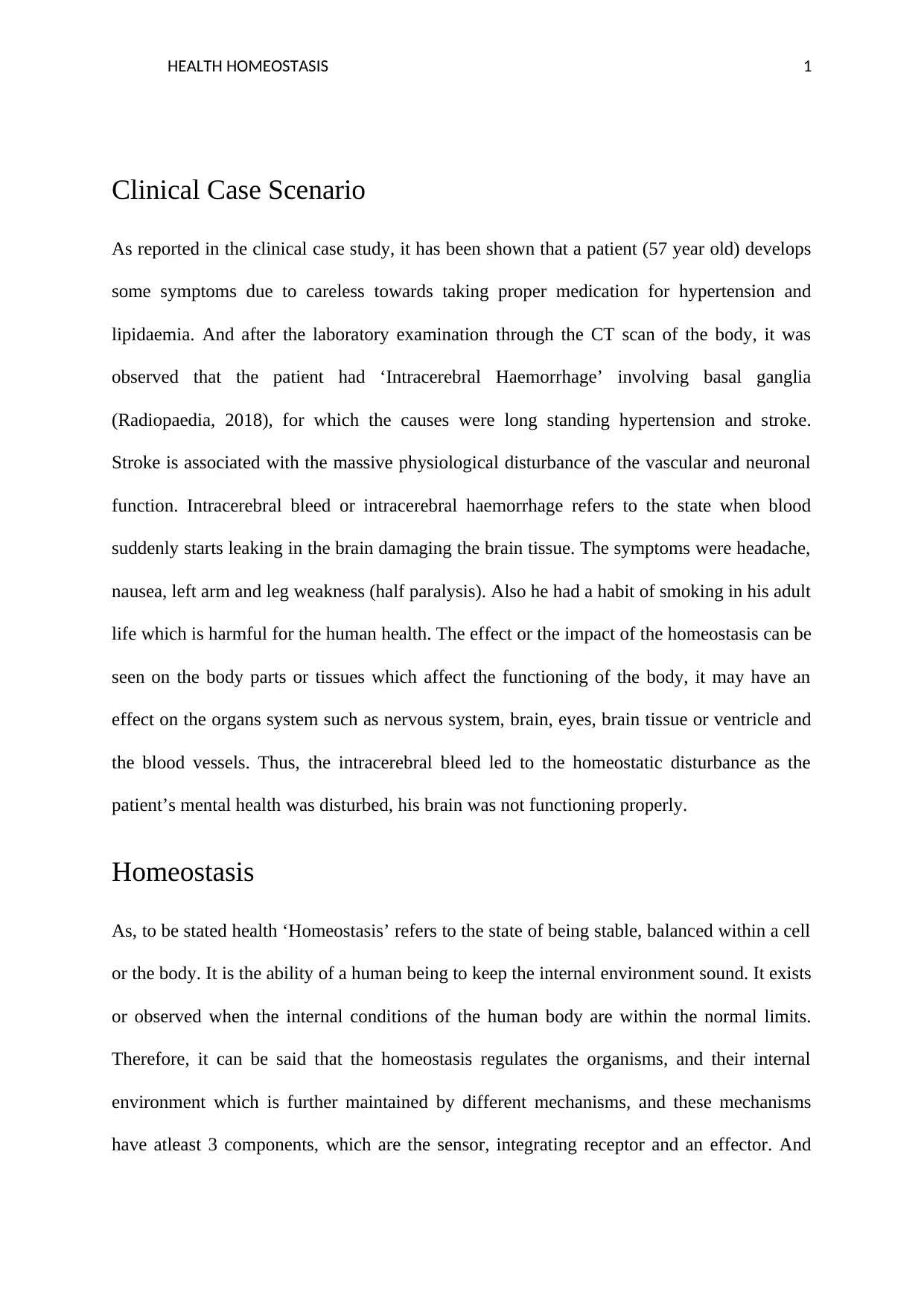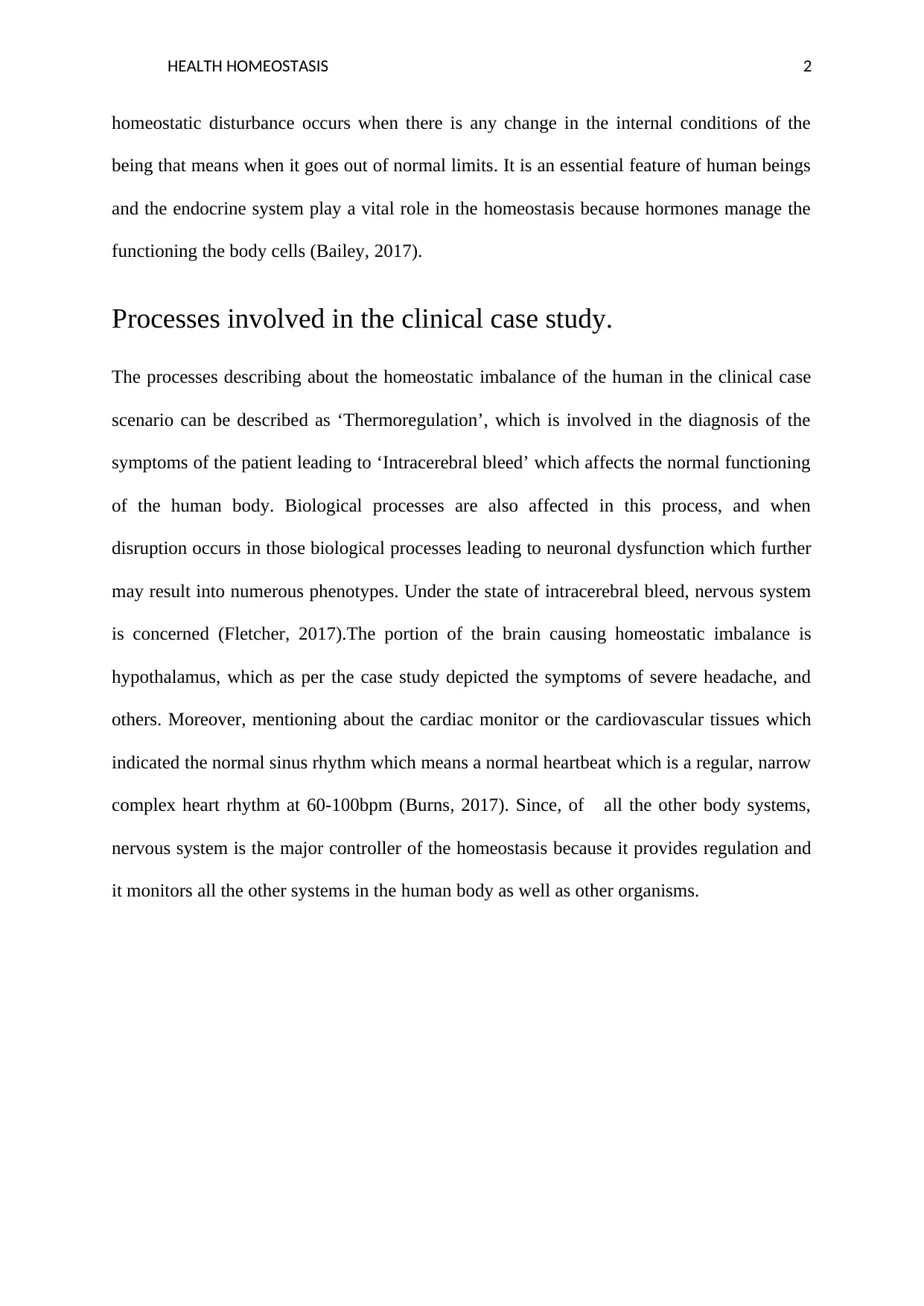Homeostasis in Health: An Intracerebral Hemorrhage Case Analysis
VerifiedAdded on 2023/06/11
|4
|720
|469
Case Study
AI Summary
This case study examines a 57-year-old patient who developed intracerebral hemorrhage due to uncontrolled hypertension and lipidaemia, leading to a homeostatic disturbance. The condition, identified through a CT scan, involves bleeding in the brain, affecting vascular and neuronal functions. Symptoms included headache, nausea, and left arm and leg weakness, exacerbated by a history of smoking. The homeostatic imbalance primarily affects the nervous system, brain tissue, and blood vessels, with the hypothalamus being a key area of concern. Processes such as thermoregulation are involved in diagnosing the patient's symptoms, leading to neuronal dysfunction. While the cardiac monitor indicated a normal sinus rhythm, the nervous system's role in regulating homeostasis is significantly compromised due to the intracerebral bleed.
1 out of 4











![[object Object]](/_next/static/media/star-bottom.7253800d.svg)